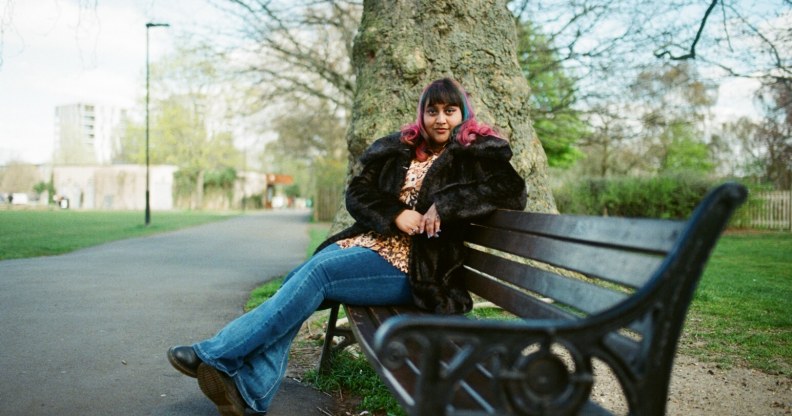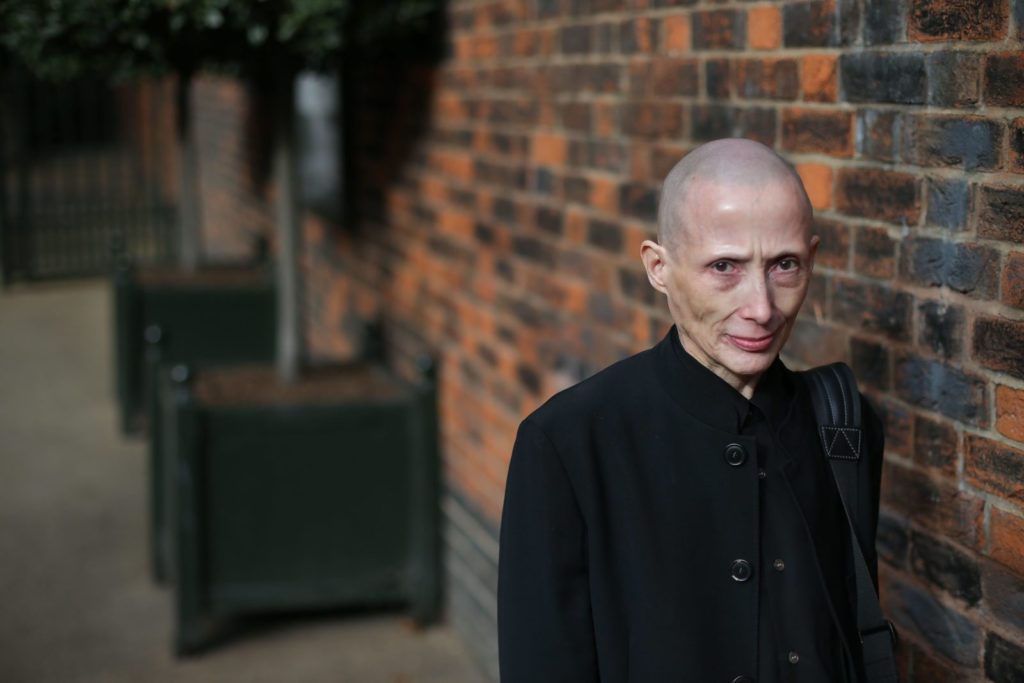What do non-binary people really need? The dismantling of all binaries, for good

Prishita for SickZine. (SickZine/Fraser H-N)
What does it mean to be non-binary? For me, it means freedom.
To be non-binary is to exist outside of society’s confines and expectations. It’s to look at the world around me and to challenge its restrictive rules. To know that my existence is expansive and cannot be contained.
Angela Davis said: “You have to act as if it were possible to radically transform the world. And you have to do it all the time.” Being non-binary allows me to act as if it were possible to exist in a world not broken in two. As if my non-binary identity is the gold lacquer filling in the crack that runs down the middle of binary gendered categories, as in the Japanese art of kintsugi – accepting that evolution and change is an inherent part of human life. And it allows me to do this all the time.
Being non-binary opens a world of possibilities – both for the ways in which we understand and express ourselves, and the ways in which we interact with those around us. While the material realities that we are forced to confront daily place unnecessary barriers in our path to self-fulfilment, I prefer to focus today on the beauty of this existence.
I prefer to dream of a world where gender is not weaponised against me, but rather celebrated as an aspect of my multi-faceted being. A world where gender is not a chore, but rather a celebration; where the status quo is not one where we must fight daily simply to be included, but rather one where the diversity of the human existence is woven into the fabric of society.
Non-binary and the ‘powerful X’
On Tuesday (13 July), the UK Supreme Court heard a landmark case brought by non-gendered activist Christie Elan-Cane that called for Britons to be allowed to state their gender as ‘X’ on their passports, instead of just male and female, as is already the case in many countries around the world.

Elan-Cane first applied for a non-gendered passport in 1995. (DANIEL LEAL-OLIVAS/AFP/Getty)
But why the letter X? As author Alex Marzano-Lesnevich stated in the New York Times: “X has always been powerful”. This references the fact that X – the Greek letter chi – held a mystical and spiritual significance in the early days of the Christian Church, partly due to its resemblance to the cross.
Marzano-Lesnevich also reminds us that X represents the unknown variable in an algebra equation and the spot where the treasure is hidden on a pirate’s map. For me, it provides a representation for something that is simultaneously known and unknown – as if our gender is Schrodinger’s cat within the boxes of binary categories.
But it’s not enough for us to seek small logistical wins. While court cases and legislative demands bring a certain level of acceptance that makes it easier for non-binary people to navigate life on a day-to-day basis, we must also continue to seek a dismantling of all binary categories.
Some non-binary people reject the gender binary entirely
A common misconception is that all non-binary identities sit somewhere in the middle of binary male and female identities. But this isn’t really the case: For some people, their gender identity occupies many different spaces in a large colourful circle around the linear binary existence, while others reject the binary entirely.
Within the bounds of the English language – and the fact that others will perceive me as gendered whether I like it or not – non-binary is the best label that exists for me, personally, to express how I feel inside. My non-binary identity acknowledges that gender is a construct, it’s a performance – as Judith Butler conceptualised. It allows me to play with gender, laugh at my own physical entity, and occupy as much space as feels most comfortable.
Raised as a girl, I starved myself, cut myself, shrunk myself, and doubted myself, all in a desperate bid to fit into the cookie cutter shaped like society’s perception of a woman. I was adrift, bobbing along passively, powerless against the ocean’s waves that flung me into the sharp rocks.
But the further along I progressed in my inner-child journey – the more I came to sit with and accept my entire self – the deeper I explored gender, both conceptually and personally. Womanhood soon started to feel like a weighted blanket that had kept me comfortable and warm through part of the year, but as the seasons changed, I felt trapped underneath it – suffocated.
Claiming my non-binary identity – with an acknowledgement of the fact that it still does place my gender in relation to this artificial binary – is not only joyful, but also healing. And there’s no aspect more beautiful than the community that exists around it.
The trans, non-binary, and intersex community that exists – that we’ve built – is powerful, resilient, and fabulous. Not only do we constantly challenge each other to be our best selves – our most authentic selves – we look at the world around us and we challenge it, too. Refusing to abide by society’s restrictive rules, we exist in a safe space entirely of our own creation. And we maintain it together, and for one another, with no questions, no hesitation, and no expectation.
To exist in these spaces, where I am seen and heard without having to raise my voice or contort my body into uncomfortable shapes – where I can catch my breath without having to explain myself to those around me – this is the real treasure that X marks on the map of life.

